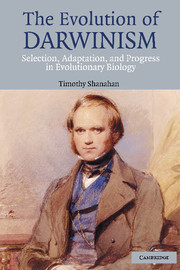6 - Adaptation(ism) and Its Limits
Published online by Cambridge University Press: 18 December 2009
Summary
Look round the world: Contemplate the whole and every part of it: You will find it to be nothing but one great machine, subdivided into an infinite number of lesser machines. All these various machines, and even their most minute parts, are adjusted to each other with an accuracy which ravishes into admiration all men who have ever contemplated them.
(David Hume, 1779)Introduction
Writing in the eighteenth century, the Scottish philosopher David Hume was duly impressed by the order, harmony, and apparent design of the natural world. It seemed to him, as it did to the vast majority of his contemporaries, to be a world that bespoke the activity of a wise Deity who arranged its various parts to function together with awe-inspiring precision. Then, as now, the most impressive instances of nested sets of machines within machines were living things, in comparison with which whatever other “machines” the universe consists of pale in comparison.
Hume could not have foreseen how much more detailed our knowledge of living things would become in the following two centuries. We now understand, in ways Hume could have only dimly imagined, how intricately adapted these living machines are to their environments. With such marvelous adaptations in abundance, it is hard not to be impressed. But exactly how impressed should we be? Reflecting on Hume's remark, Cronin (1991, p. 23) asks exactly the right question: “Adaptations, in Hume's delightful phrase, ‘ravish into admiration all men who have ever contemplated them’. But how ravishing, how perfect should we expect them to be?”
- Type
- Chapter
- Information
- The Evolution of DarwinismSelection, Adaptation and Progress in Evolutionary Biology, pp. 143 - 170Publisher: Cambridge University PressPrint publication year: 2004



